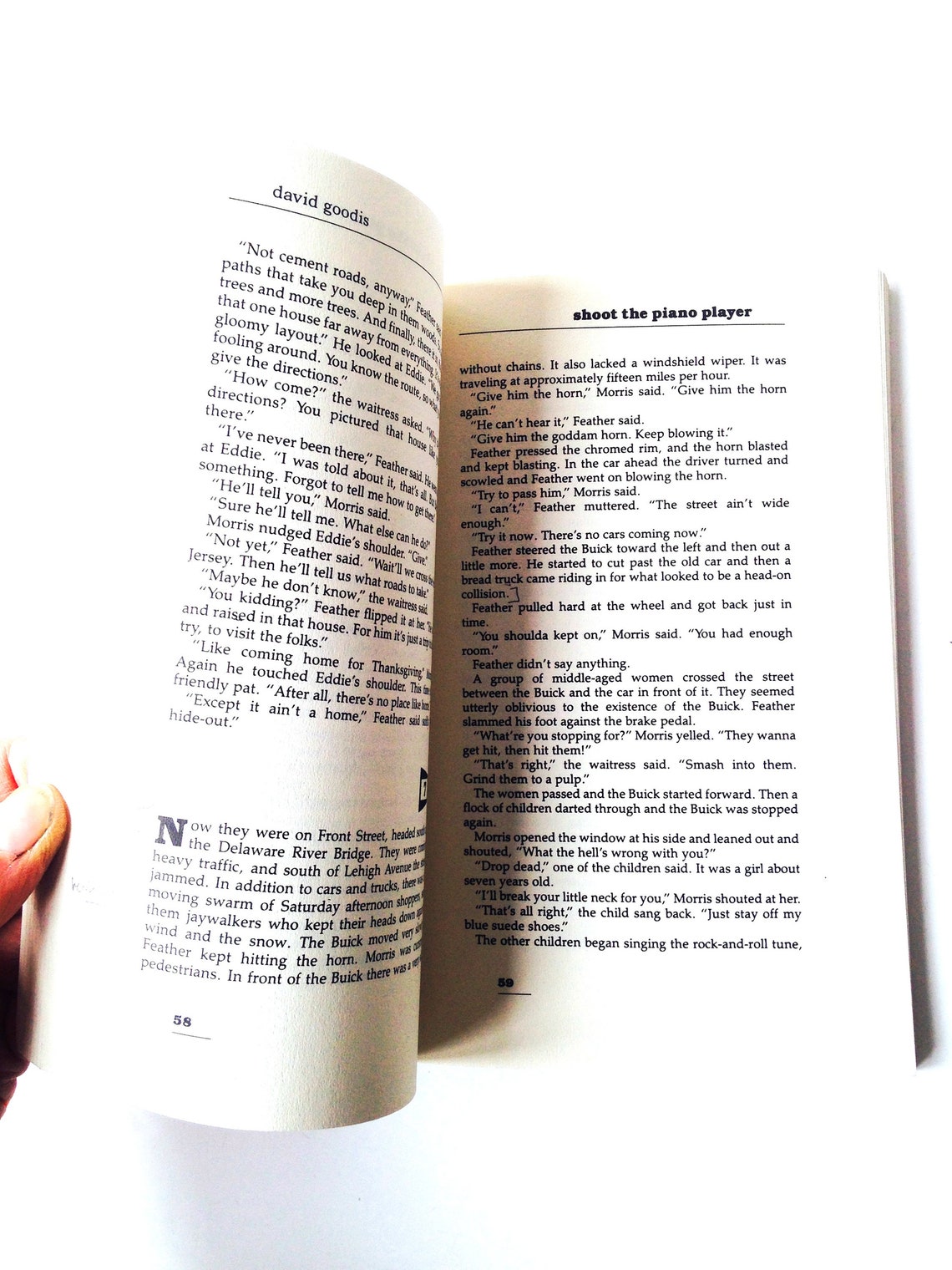



Ultimately, it is this story that Goodis is telling us. Equally broke, down on her luck and lacking ambition, she finds in Eddie the strength to carry on. She sees something special in Eddie, beyond the ruggedness and street grime. The heart of the story is Eddie's relationship with the inspiring waitress Lena. It's a Tommygun, shotgun and revolver pirouette in an old Jersey farmhouse. The book's finale is a firestorm, with one of the best gunfights I've read in recent memory. With that comes violent episodes as Eddie fights in bars and streets while running from the Mob and the law. Eddie, with brothers Turley and Clifton as excess baggage, attempts to avoid the Mob while struggling with a pesky professional wrestler turned bouncer. With the fighting came a miraculous talent for the piano, one that he utilized to make it all the way to Carnegie Hall. We later learn about Eddie's prior undoing, from rough childhood through the war in the South Pacific.

You wanted to make music, and the way it looks from here on in you're finished with that, finished entirely. On one snowy night, Eddie thinks to himself, “they take the piano away and they give you a gun. Eddie, consistently avoiding his family for years, is now tangled in his brother's affairs. They make the connection that Eddie and Turley are siblings. It's obvious he's running from the baddies, which are later explained as Mob enforcers after some stolen loot. As the reader is becoming acquainted with Eddie, in walks his troublesome estranged brother Turley. In the early introduction, Eddie is the lovable loser – a loner going with the flow, broke with his only friend being Clarice, an equally hapless prostitute that lives and works down the hall. In the book's opening we are introduced to Eddie, an ill-starred pianist working a crummy bar in the Port Richmond section of Philadelphia. “Down There”, while thoroughly enjoyable, is a despairing portrait of one man's decline and fits Gorman's umbrella description well. In Brian Ritt's “Paperback Confidential” (Stark House), it notes that author Ed Gorman once described the Goodis novels as suicide notes. He's an incredible storyteller with a career literary emphasis on the tragic downfall of a performing artist (painter, pianist, singer, etc). This is my first taste of a Goodis novel, and by sampling just this body of work, I'll certainly enjoy more of it. Starting in 1962, the book was published under both names with different artwork for each version. The title was reworked to “Shoot the Piano Player” for the 1960 French film adaptation. “Down There” was written by crime novel icon David Goodis and released in 1956.


 0 kommentar(er)
0 kommentar(er)
